This is one in a series of posts on the Fujifilm GFX 100S. You should be able to find all the posts about that camera in the Category List on the right sidebar, below the Articles widget. There’s a drop-down menu there that you can use to get to all the posts in this series; just look for “GFX 100S”.
A few days ago, I tested the Fuji 250/4 GF and the Rodenstock 180/5.6 HR Digaron S on the GFX 100S on axis with a low contrast target. The Rodenstock was the clear winner. Later, I analyzed exposures made by someone else using a similar, but not identical target, and found that his 250/4 was behaving much like mine. He said he was going to test all of his GF lenses at the same magnification with his target. I thought that seemed like a good idea, and I’m going to do the same, starting with the Fuji 80 mm f/1.7 GF lens I’m testing today. I will be using the GFX 100S for all the tests.
I used a matte target for this test. I suspected that it’s not sharp enough to stress the lens at the distances I’m using. I reprinted the target on F-finish paper and repeated the test. I’ll show you both results here.
Here are the distances I’ll be using:
Here’s the scene with the matte target:
Here’s what it looks like with the baryta target:
Here’s the test protocol:
- RRS carbon fiber legs
- C1 head
- Target distance 85 feet
- ISO 100
- Electronic shutter
- 10-second self timer
- f/1.7, f/2-16 in whole-stop steps
- Exposure time set by camera in A mode
- Focus bracketing, step size 2
- Pick sharpest one in Imatest
- Develop in Lightroom 10.2
- Sharpening amount 0, radius 1, detail 0
- White balance to gray of chart
- Some minor exposure adjustment
- Rest of settings at default
- Analyze in Imatest
You can learn a lot from looking at the raw data in the exposure series; this is with the matte target.
The fourth stop tested, f/4, is the sharpest stop, with f/2.8 and f/5.6 being about as sharp.F/2 and f/8 are next and about the same. Then comes f/1.7, followed by f/16.
I’ll show you the Imatest MTF plots for the best image at all 8 f-stops in order as I stopped the lens down, matte first, and baryta second:
f/1.7:
Definitely higher MTFs for the baryta target.
f/2:
Slightly higher for the glossier target.
f/2.8:
The same.
f/4:
The matte target is actually sharper.
f/5.6:
Again, the matte is slight sharper.
f/8:
Matt slightly sharper.
f/11:
Matte slightly sharper.
f/16:
Matte slightly sharper.
I feel better about using the matte target, except for the f/1.7 shot, which was significantly sharper with the baryta target. Maybe the step size of 2 is too large. I’ll try 1 next time.
Chromatic aberration in the same order for the matte target:
A fair amount of CA at f/1.7 and f/2, but not much after that as you stop down.
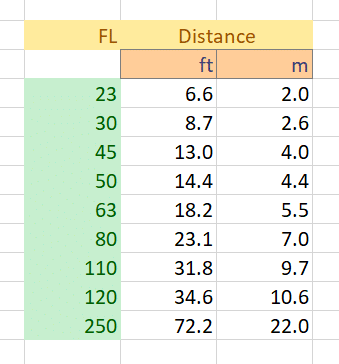
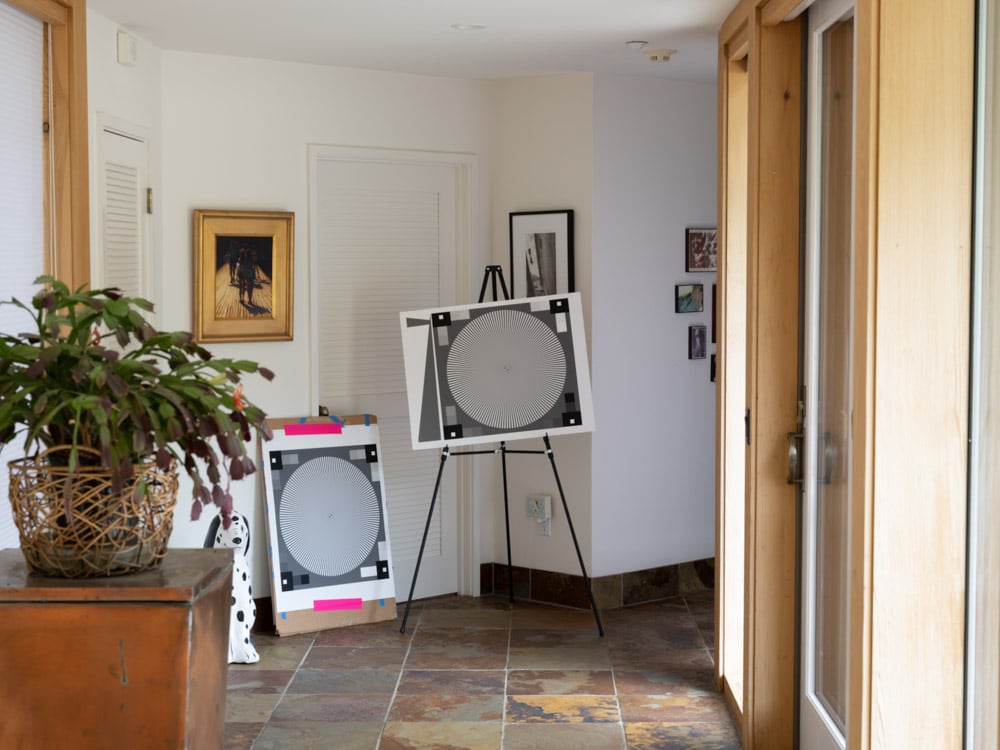
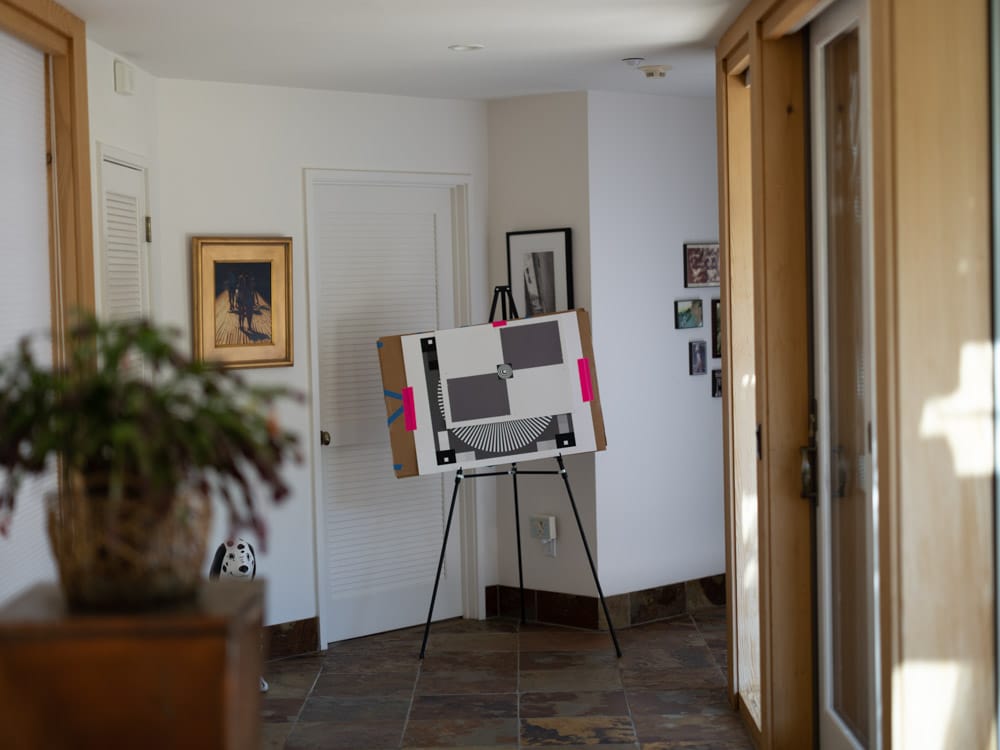
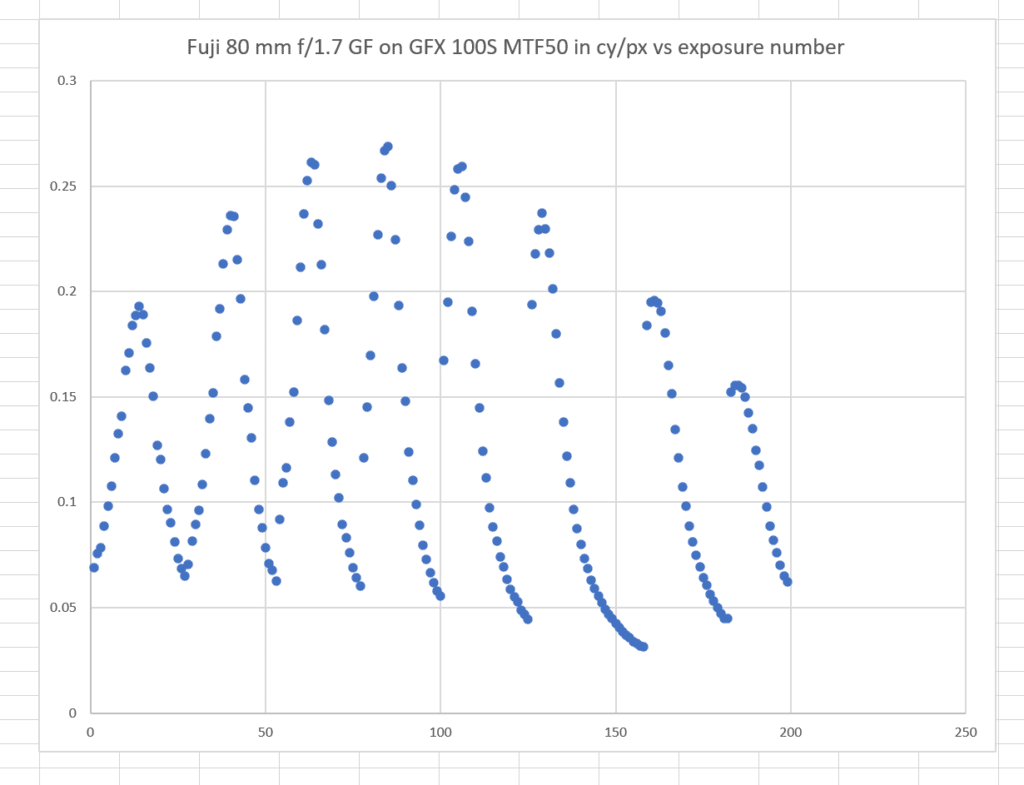
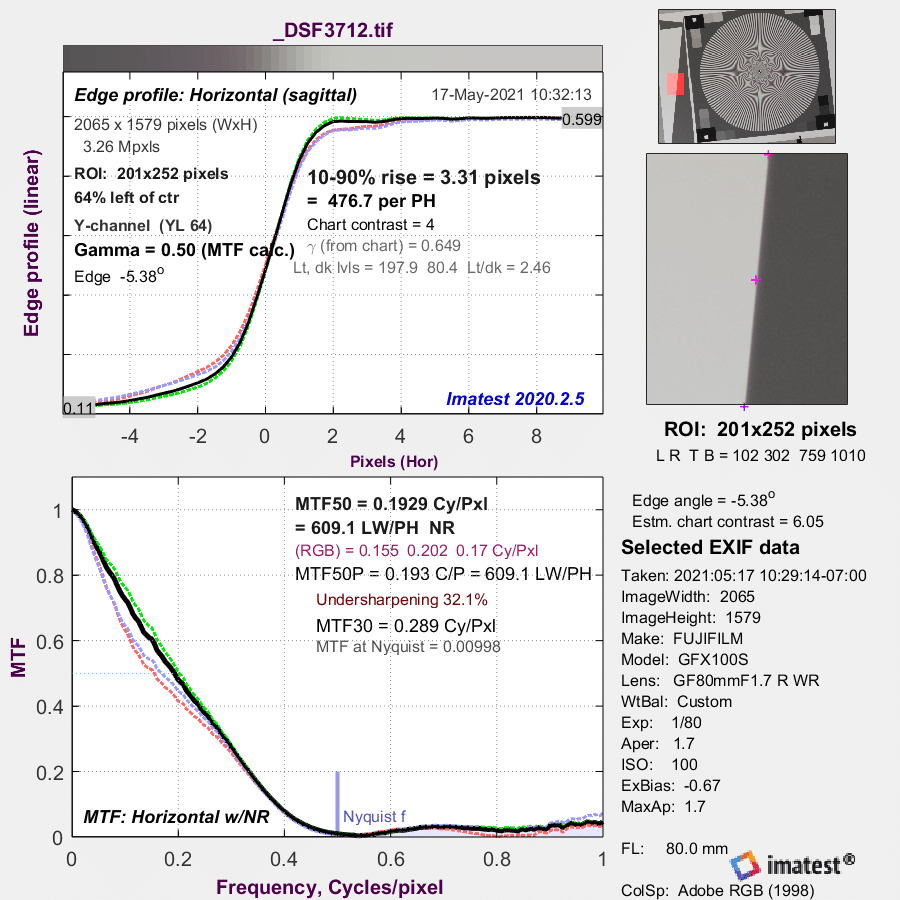
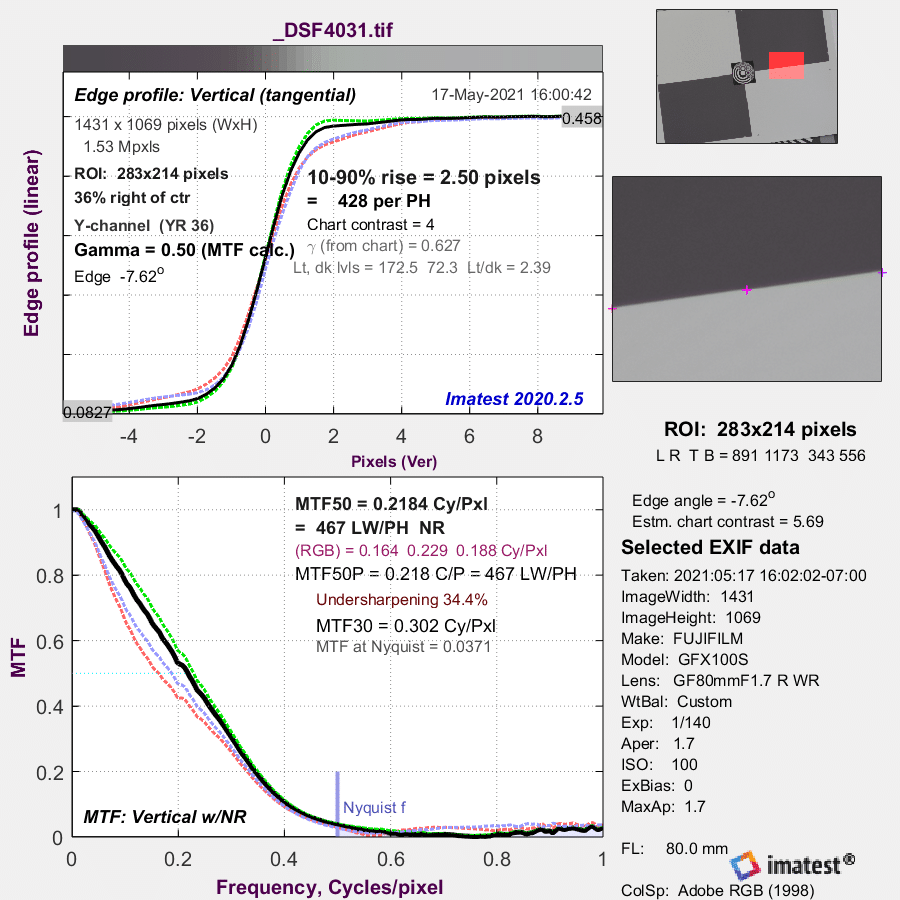
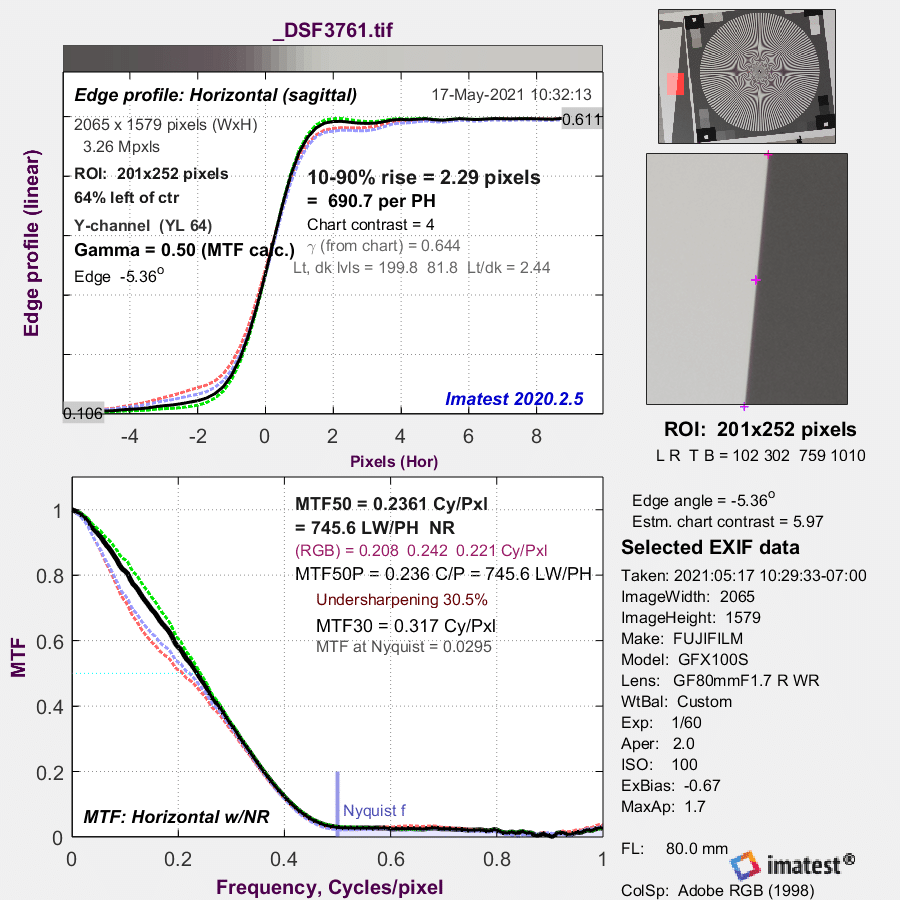

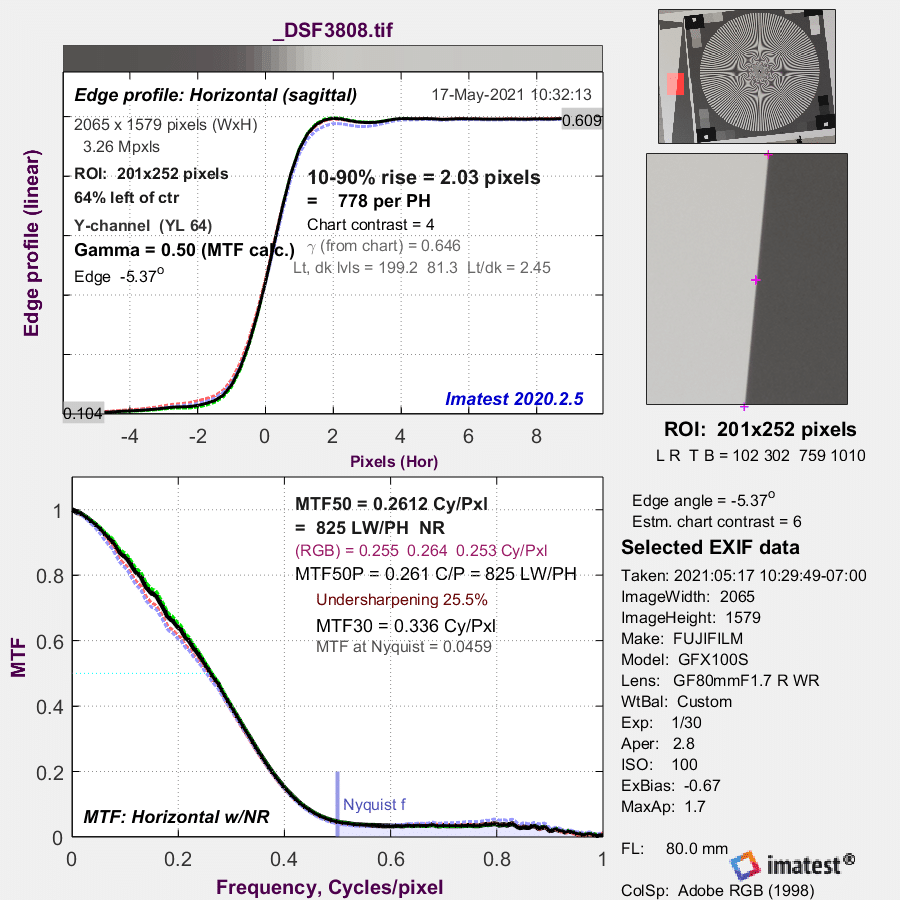
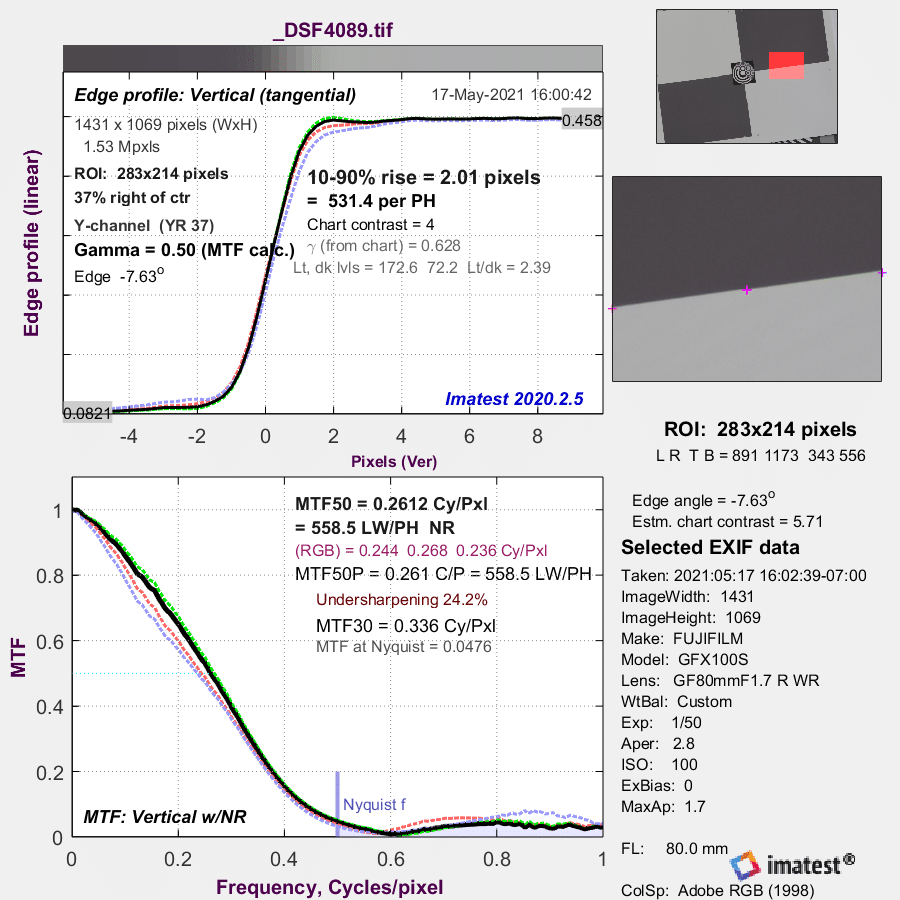
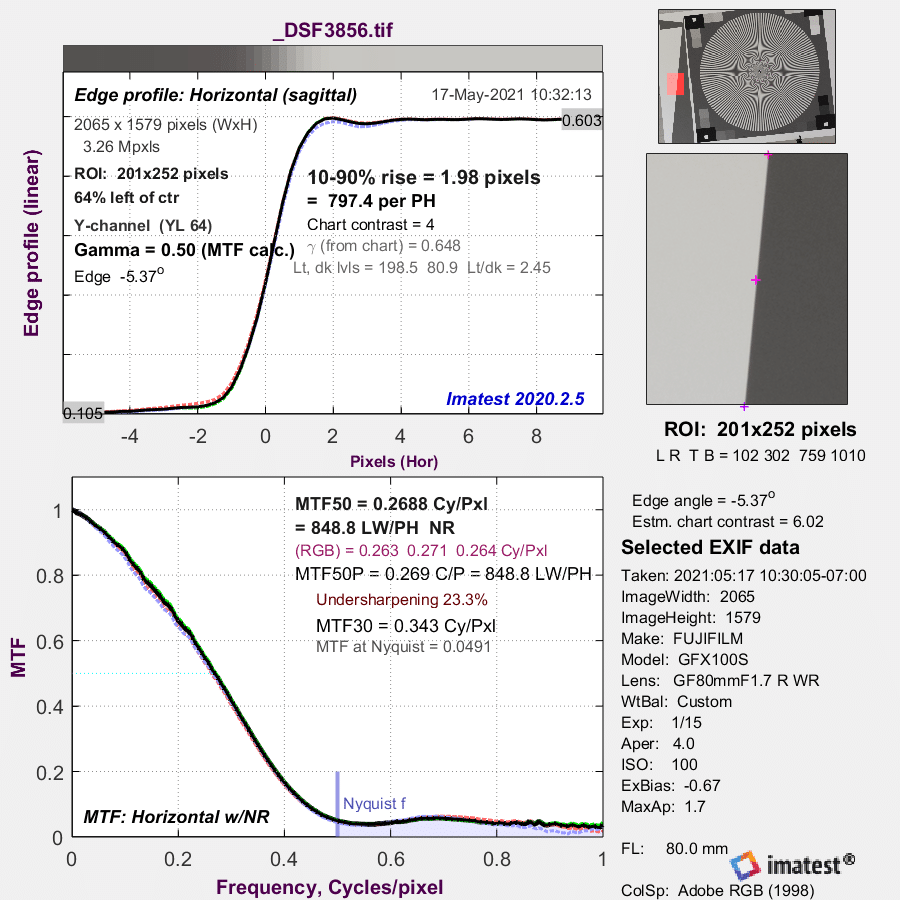
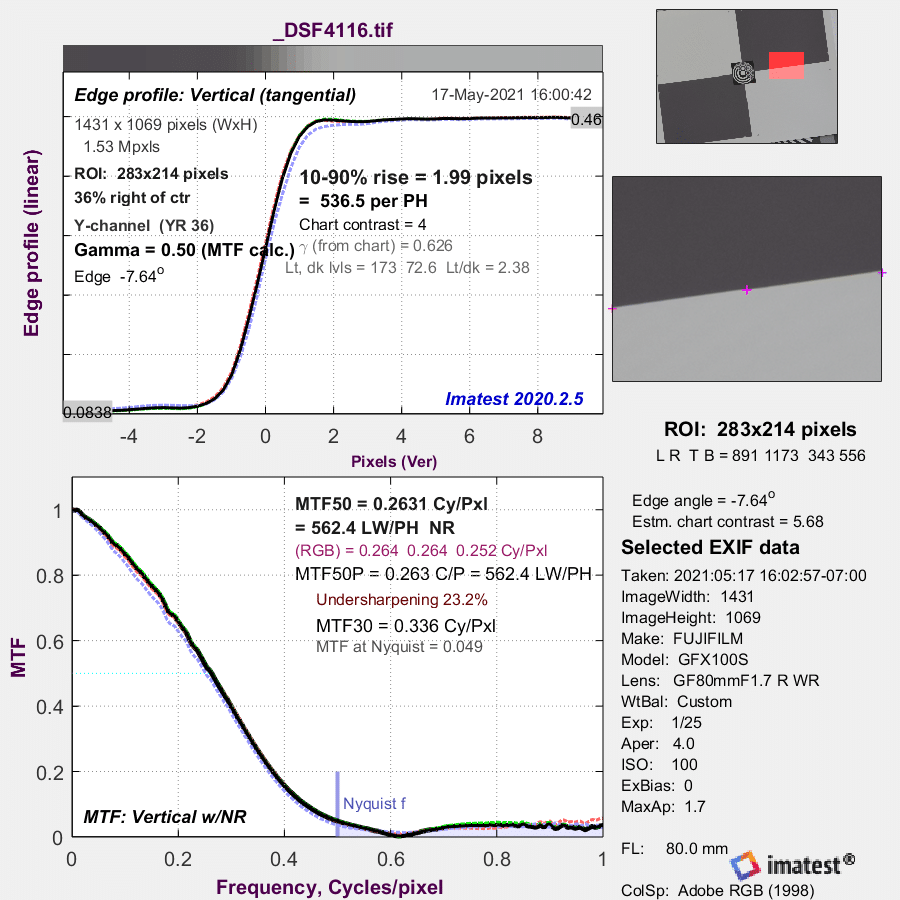
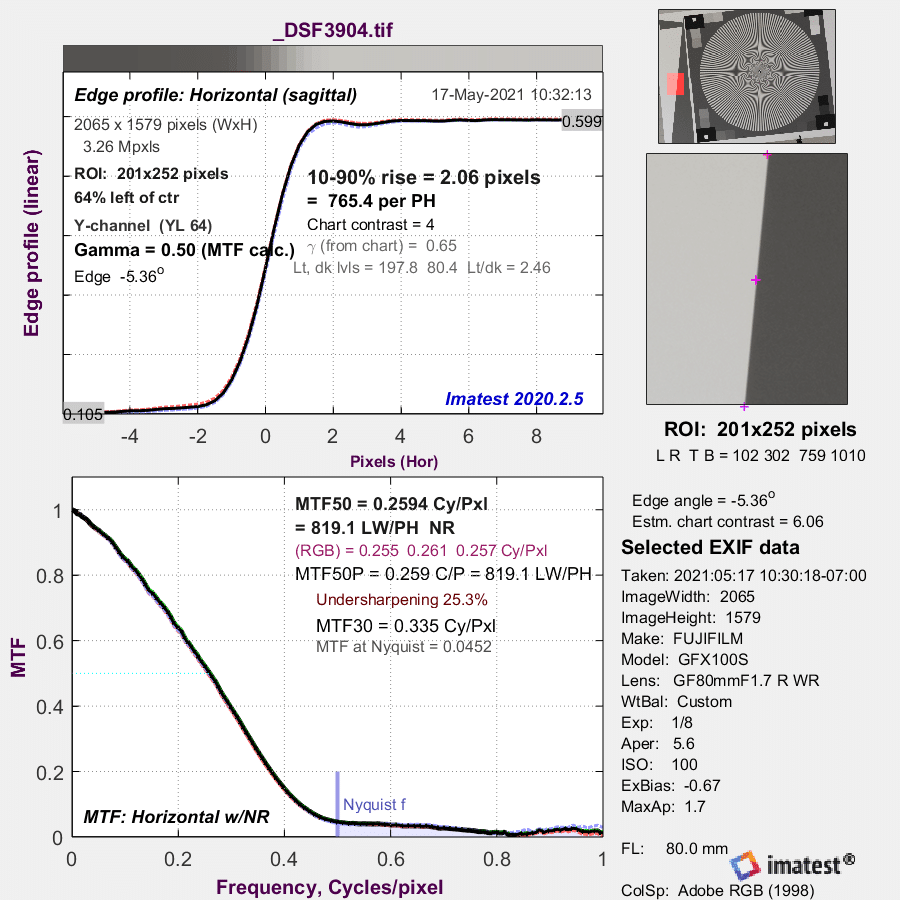
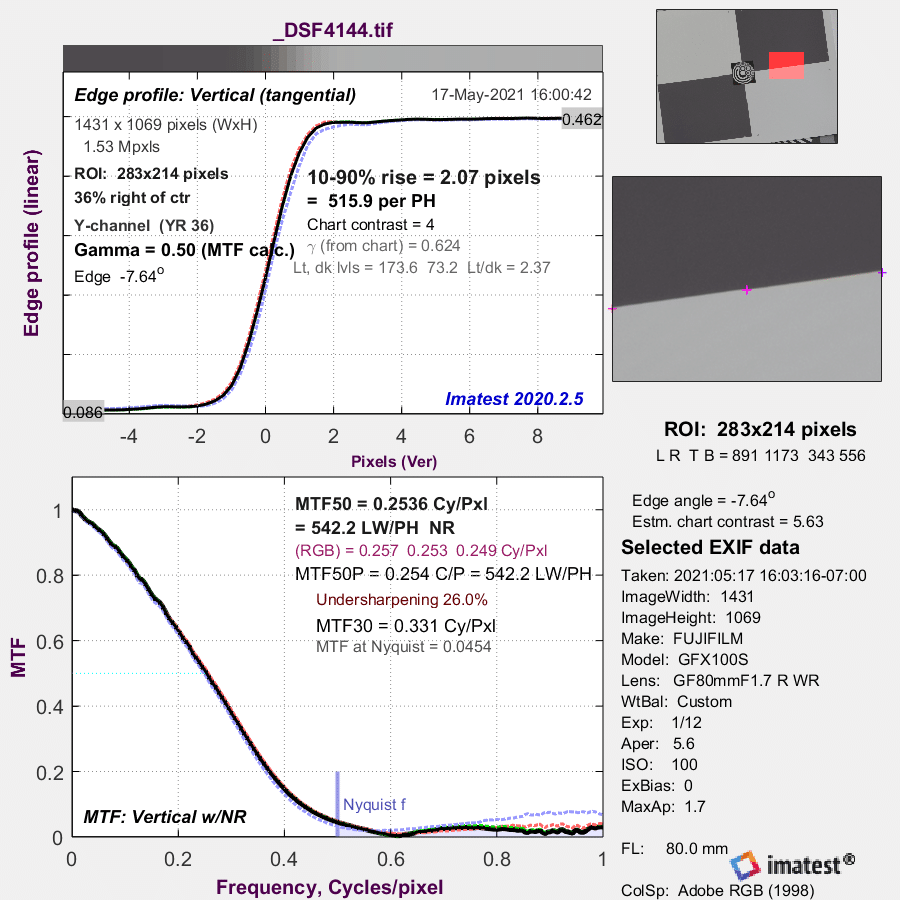
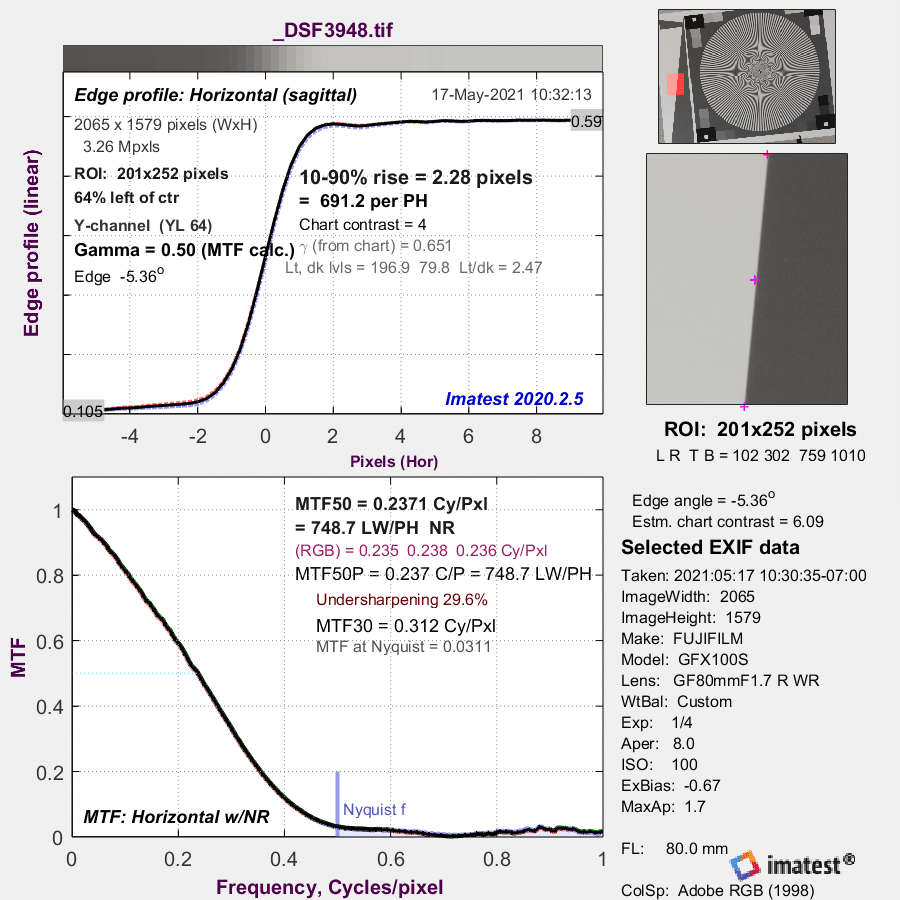
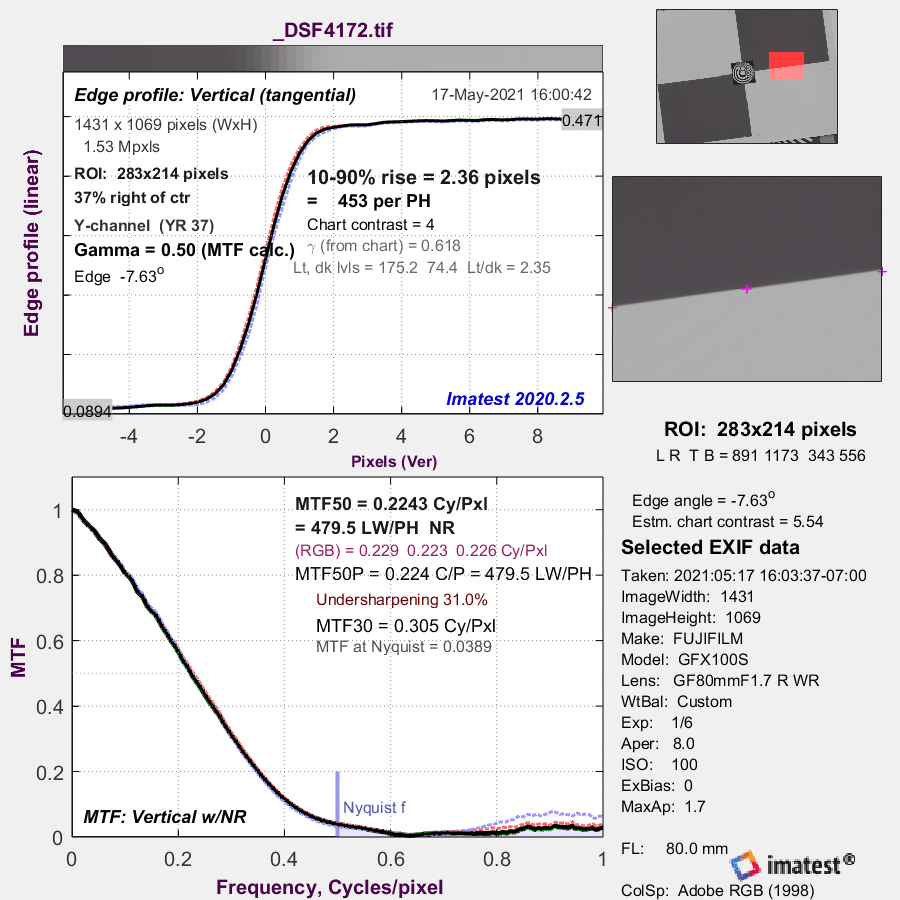
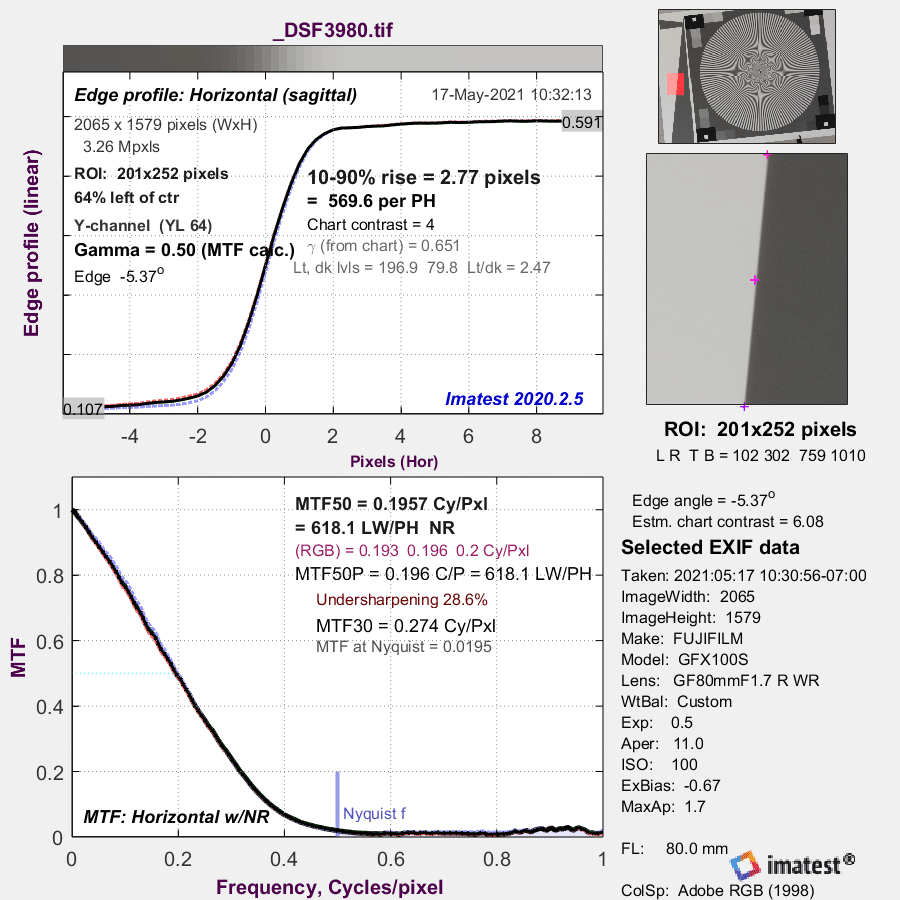
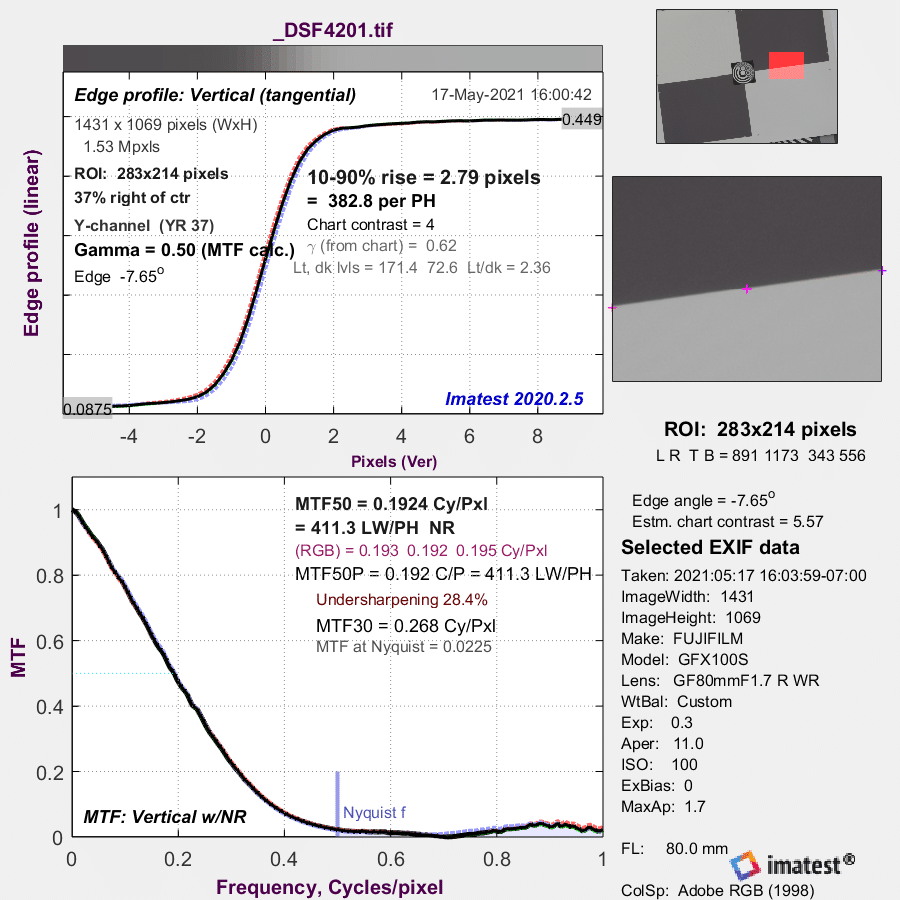
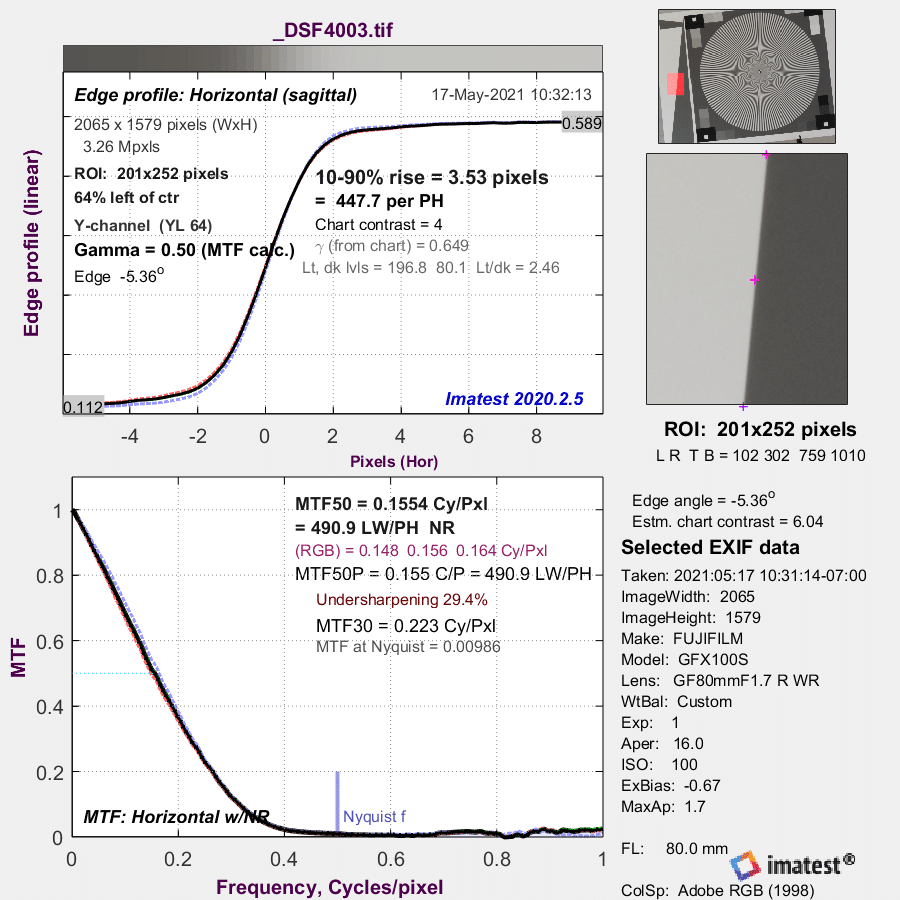
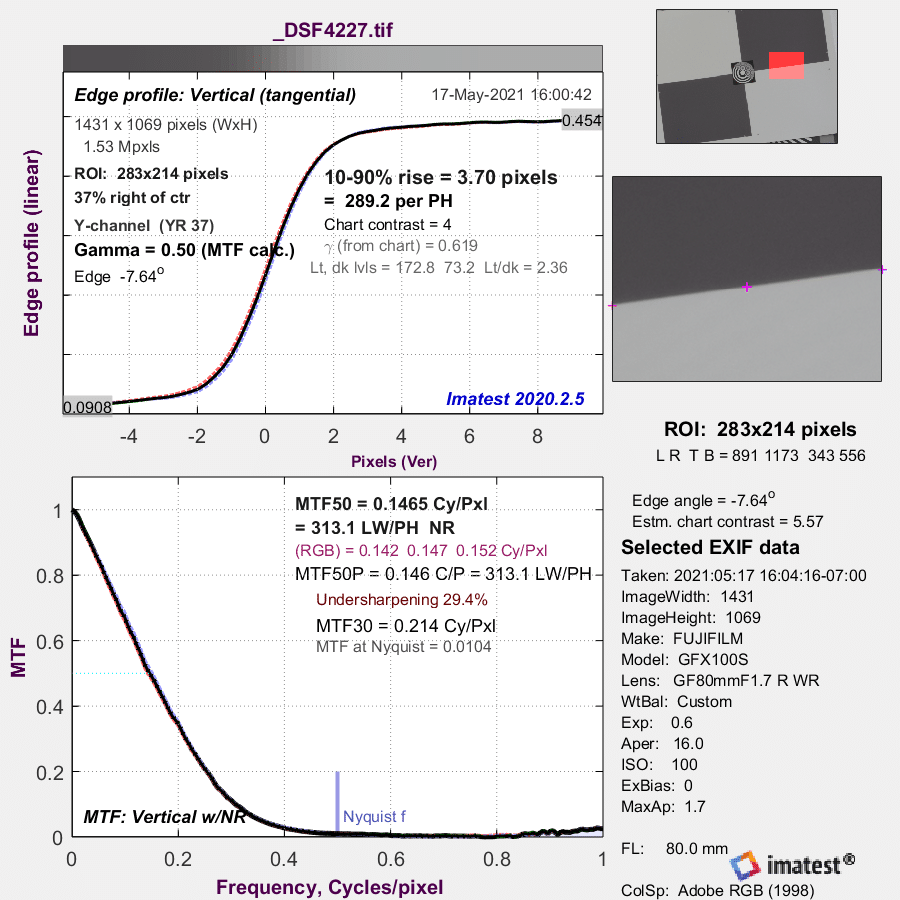
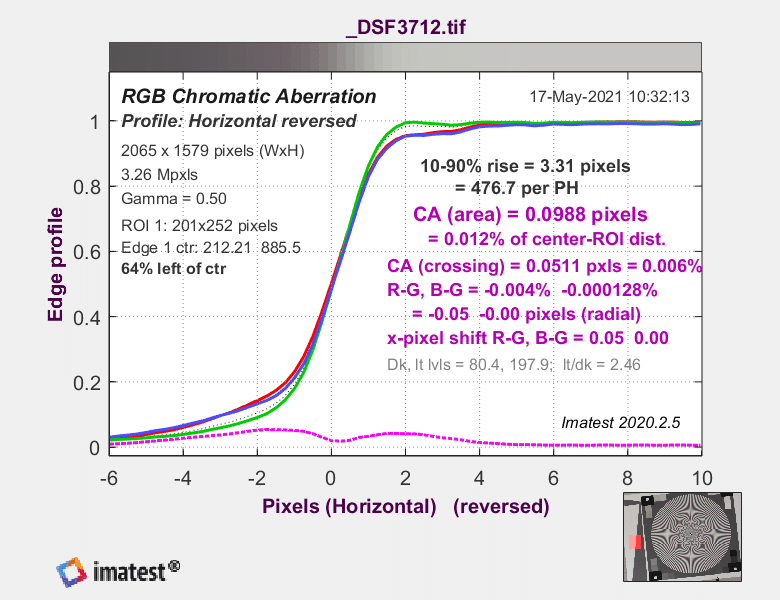
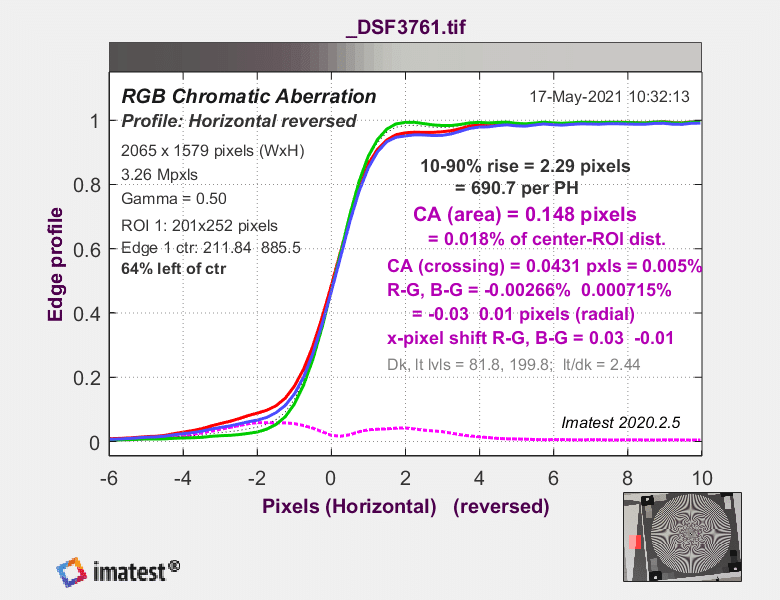
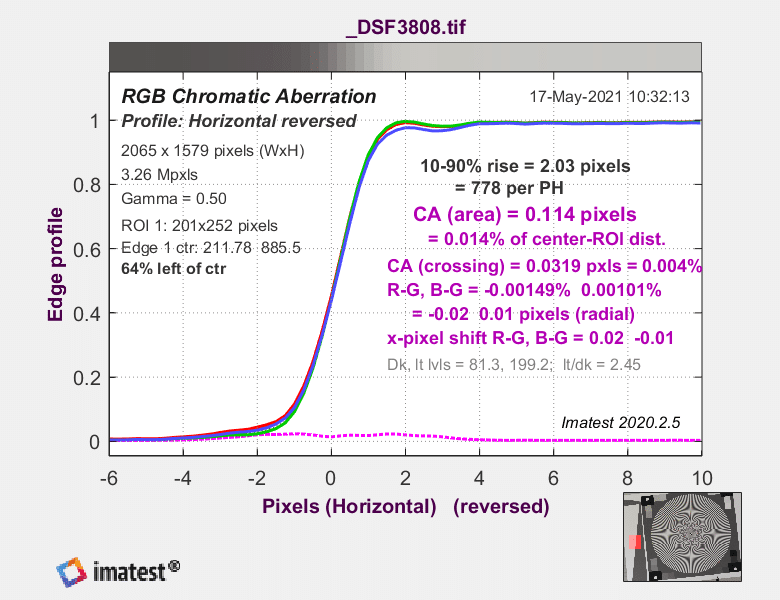
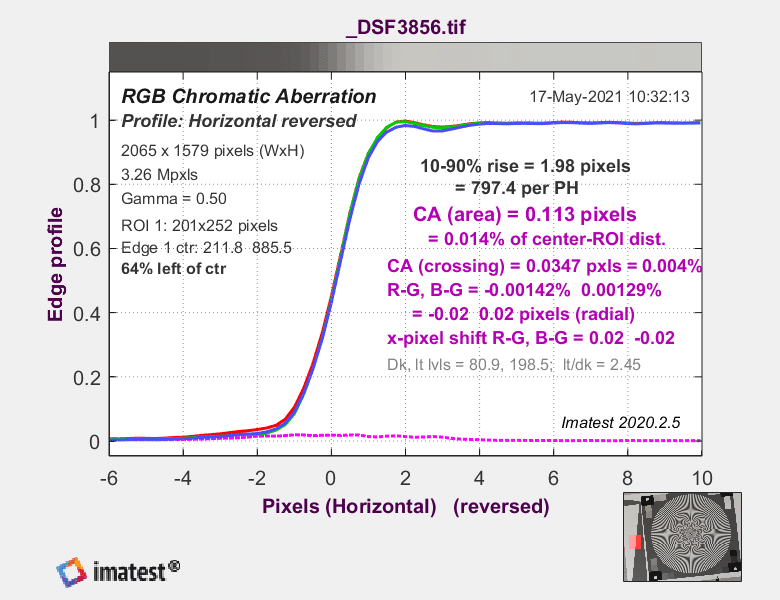
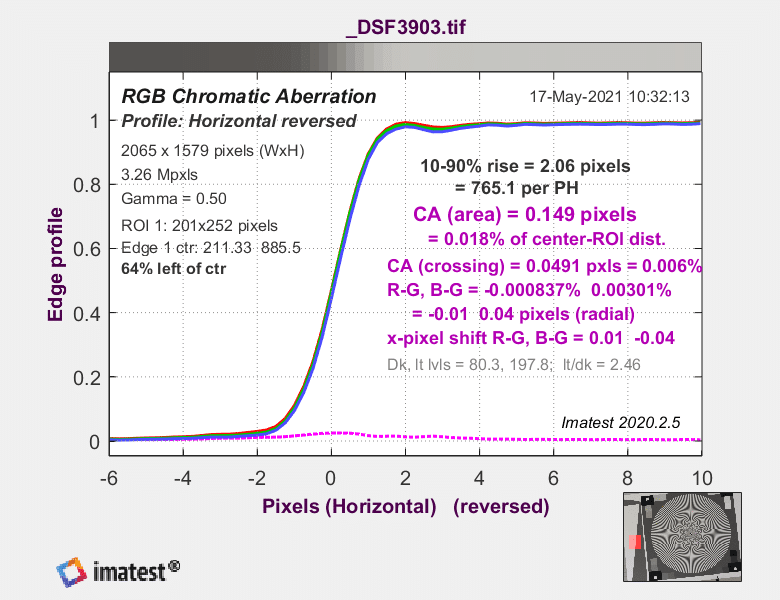
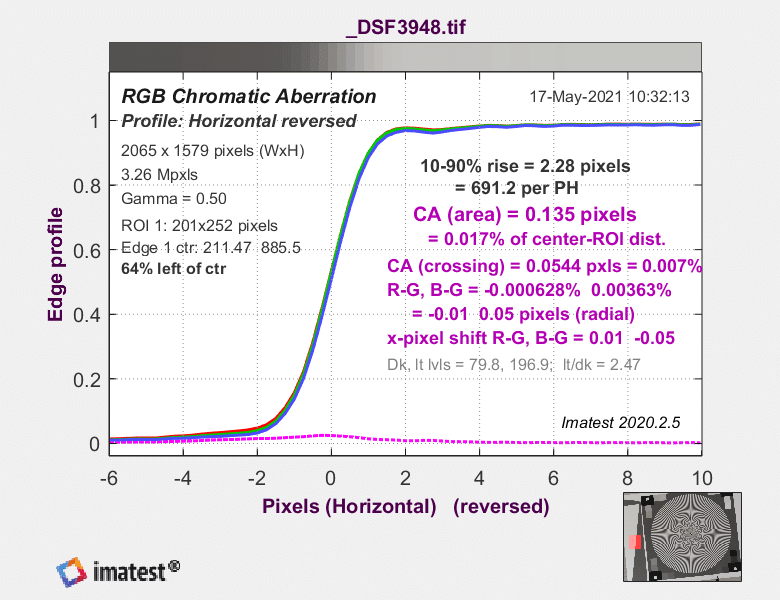
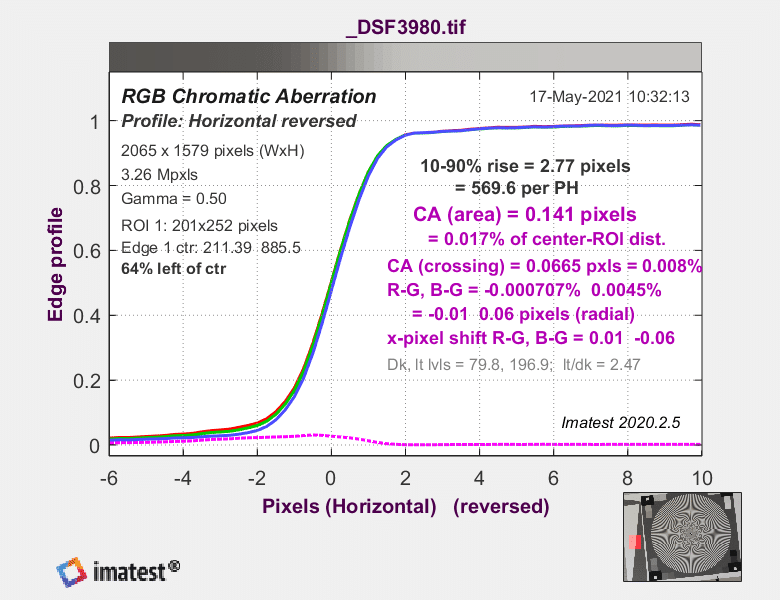
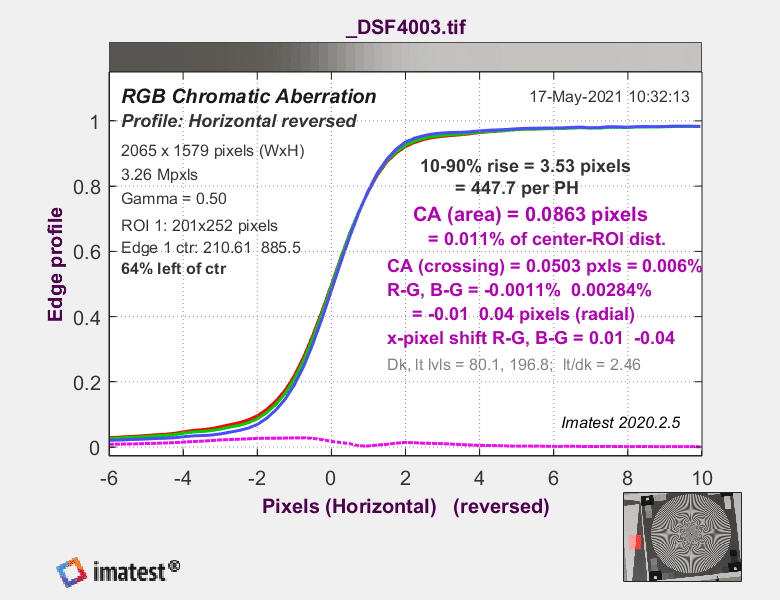
Happy to see that there is very little difference between the matte and glossy targets. One less thing to worry about.